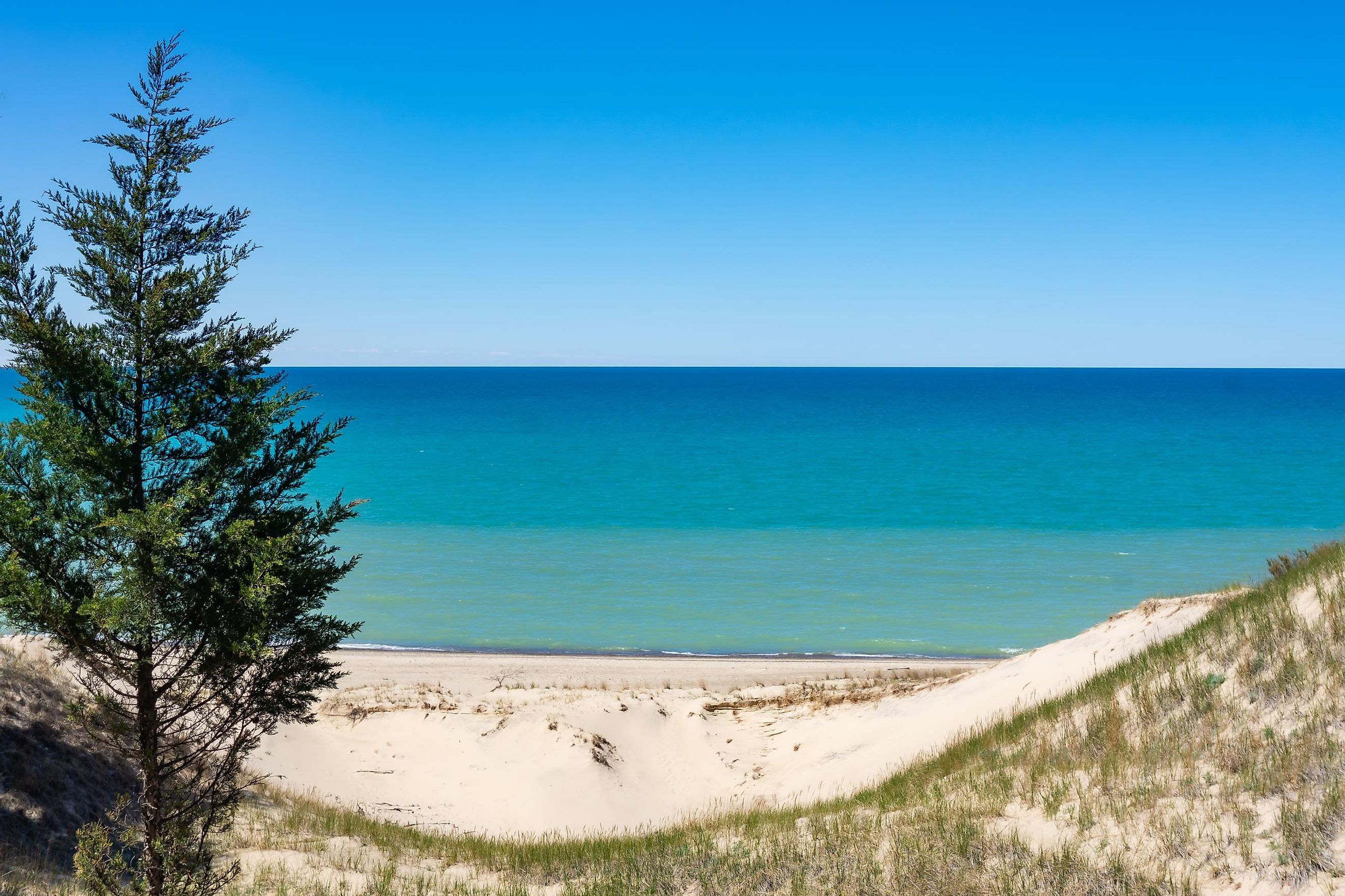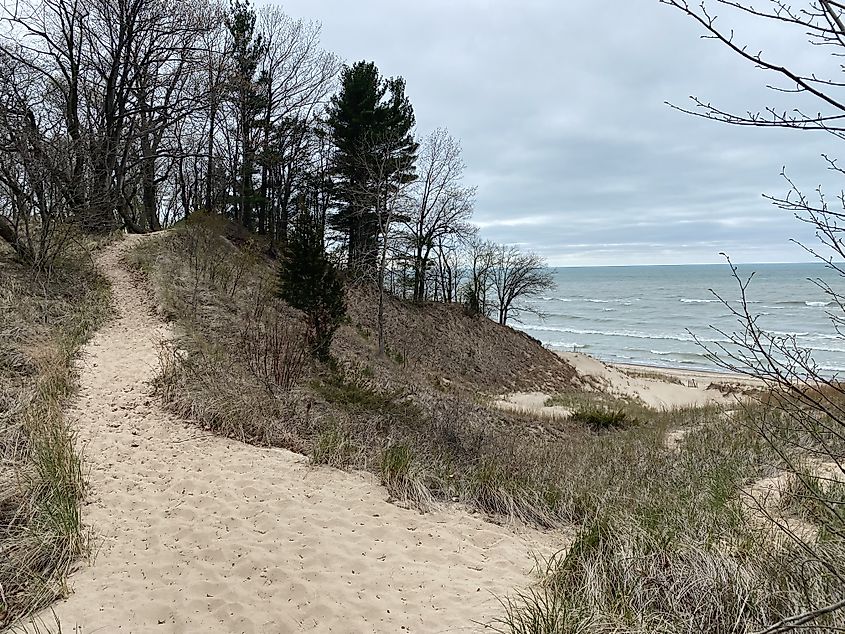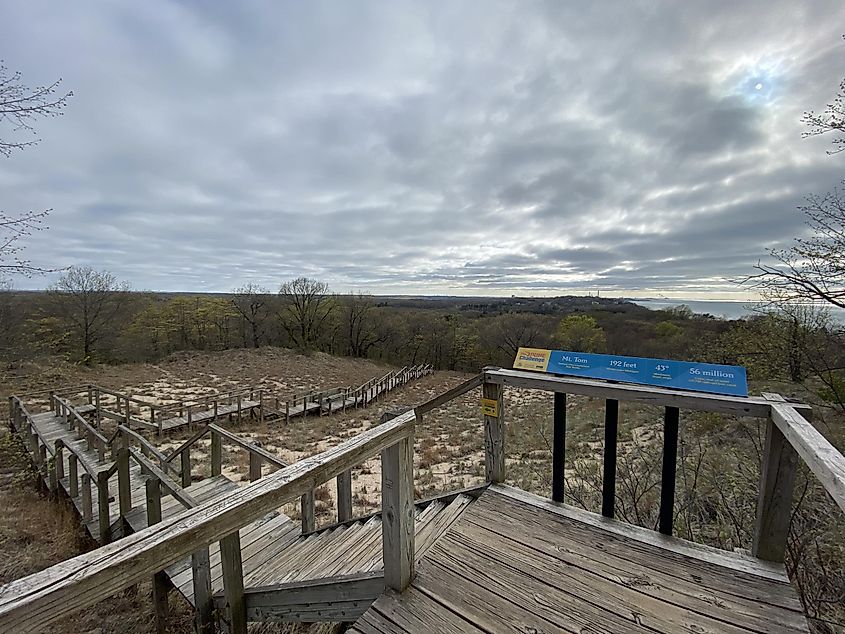
Indiana Dunes vs Warren Dunes: Comparing Two Lake Michigan Parks
There are two popular dune-based sanctuaries on the southeast shore of Lake Michigan. Indiana Dunes State Park, as the name conveys, is situated in Indiana's sliver of the Great Lake coastline, while Warren Dunes State Park sits a mere 35 miles north - just inside the Michigan border. After visiting both on sequential spring days, I can attest to the varied pros and cons of each. So if you're planning an upcoming lake getaway of your own, and only have time for one destination, this article will help you make an informed personal call.
Indiana Dunes State Park

Established in 1925, Indiana Dunes State Park preserves 2,182 acres of precious habitats (freshwater dunes, wild grasses and flowers, black oak/climax forests, wetlands, etc.) along northwestern Indiana's Lake Michigan shoreline. The state park, which is part of Chesterton, Indiana, is encompassed by Indiana Dunes National Park (formerly known as the Indiana Dunes National Lakeshore), which itself spans between the communities of Gary (southwest) and Michigan City (northeast). Parking is ample, the picnic area and campground (140 serviced sites plus a youth tent area) )are both spacious, the beach is wide and longer than most would care to walk, the beachside pavilion serves up hot meals and grab n' go treats, and the trail system (which centers around an informative nature center) includes nine marked routes that amount to over 15 miles of novel hiking.
Pros:
- Even on a cool and blustery late-April day, Indiana Dunes State Park had both arms wide open. I felt immediately welcome at the National Park Visitors Center (note: Indiana Dunes State Park and National Park are separate entities), where I received candid tips about what would work best for my intended schedule.
- A few miles up the road, my first encounter with state park rangers (at the little admittance booth) was exceedingly jovial. I could tell they were happy to have visitors, and wanted to chat.
- The campground was open, the picnic area was open, the nature center was open, a heated bathroom was open, and the park itself was open until 11pm.
- The trail system and shoreline was extensive - much more than I could shake a stick at with a 90-minute run followed by a half-hour hike (I had to sneak in the "3 Dunes Challenge" before leaving). In addition to the dunes, there were also well-trodden forest trails, and lengthy boardwalks through wetlands).
Cons:
- The state park and national park, although they occupy a similar space, do not overlap logistically. Therefore, separate passes have to be obtained. Because of this, I opted for the state park, as it looked to have the best concentration of trails and other amenities, and it was less than half the price (i.e. $12 vs $25 for a non-resident). Indiana Dunes National Park stretches on either side of the centralized state park.
- The shoreline is visibly industrialized to the south and north. The park itself is pristine and inspiring, but when stood upon the beach, some smokestacks and power plants rise to meet the peripheral skyline.
Warren Dunes State Park

Located in the southwest corner of Michigan's Lower Peninsula - just 35 miles northeast of Indiana Dunes State Park - Warren Dunes State Park protects 1,952 acres of forested dunes and interdunal wetlands, as well as three miles of sandy Lake Michigan shoreline. Here in Sawyer, Michigan, 10,000-year-old dunes tower above equally massive lakeside parking lots. There are six miles of hiking trails (mostly on and around the dunes), a campground with 185 serviced and 24 rustic sites (plus the privately-owned Kamp Across from the Dunes campground just outside the park entrance), a modest beachfront pavilion with seasonal bathrooms and concessions, and pure, white, wide, soft, sandy beaches.
Pros:
- The marque attractions are stunning. They beg to be climbed and then rapidly descended, whether on foot or sandboard. Note: But stick to designated trails because the ecosystem is delicate.
- The dunes are bigger than at Indiana Dunes State Park (i.e. upwards of 260 feet versus a little under 200 feet, respectively).
- There's definitely no shortage of parking (when at full, summer capacity, that is).
- The co-owners of Kamp Across from the Dunes were super friendly and helpful. Look to this campground as a viable alternative during peak-season.
Cons:
Relevant for the off-season.
- As of April 25th, 2024, the park was only open for limited hours (i.e. 8am - 5:30pm), bathrooms were closed, the campground was closed (including surrounding private ones), and the admittance booth was closed.
- Guests were responsible for paying their cash-only fare (no change) to an envelope drop box. I was confused by this and the woman behind me in the queue was also confused by this (and she'd been there before). Although no employee was present to greet and vet visitors, one was available to ticket and tow the non-compliant. One wonders why they can't just have the park ranger swap tasks? It would, seemingly, make things easier and more profitable for everyone.
- The personnel I did interact with (in the head office), did not seem pleased to see me. Granted, maybe I had been presumptuous in going there despite the partially-pyloned road.
The Verdict(s)

Personally, I preferred my experience at Indiana Dunes State Park. As someone who wanted to get in a good run, take lots of pictures, cook some food in nature, and sleep cheap in my little camper van, the Indiana iteration delivered on all fronts. Yes, I drew the short straw in terms of weather, but that was an uncontrollable variable, and would have been the same up at Warren Dunes that day anyway. I look forward to returning in the summer, when the pavilion patio wafts barbeque smells into the ubiquitous breeze, and sunseeking patrons speckle the spacious beach.
As for the Michigan equivalent, I think if I returned during the summer season, I would receive a warmer welcome (pun intended). With that said, photographers will have a field day there at any time of year, as once you pierce the first layer of beachside dunes, every single frame is captivating. And ofcourse, I can also see how summertime vacationers would delight in having such a gigantic (and visually-unadulterated) beach to sprawl out on. So Warren Dunes State Park is not without its advantages.











